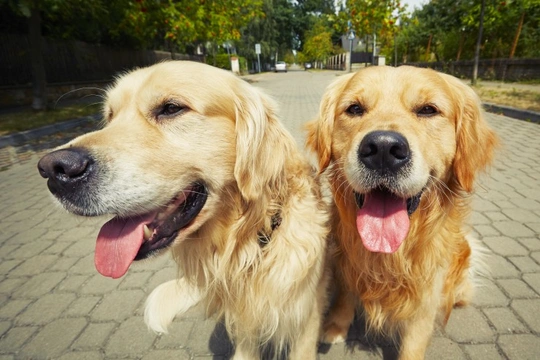
Do Dogs Recognize Their Siblings and Relatives?
Humans are very good at anthropomorphising our animal companions-attributing human behaviours, emotions and motivations to the things that animals do, when in reality, the behaviour or reaction in question might mean something very different in pet terms! However, because both dogs and people are mammals who have lived in each other’s company and relied upon each other for millennia now, there are also a lot of similarities between our two species, which have either helped us to live side by side or that have developed over time due to said living situation.
It is an old joke that over time, dogs and their owners end up looking similar to each other due to our shared homes and lifestyles, although this is a statement that should be taken with a large pinch of salt and one that is by no means true for all dogs and owners! But when it comes to how does relate to and interact with other dogs in terms of what they understand and what they know on an instinctive level, we tend to have less of a clue!
One common question that comes up surrounding dogs and their interactions with and relationships with each other is whether or not dogs know and recognise their own relatives, both those that they have been in contact with all of their lives and those that they may have been apart from for years.
For instance, does a female dog recognise her own puppies after they have been weaned from her and separated for a few years? Do reunited littermates know that they are siblings? In this article, we will attempt to answer these questions. Read on to learn more.
Sibling recognition
Starting off with siblings, littermates spend their first few months of life together and living in very close quarters to each other, and so they spend this vital, formative time of their life getting to know their own brothers and sisters very well.
However, whether or not they will recognise each other later in life after they have been separated for some time depends on what happens during the crucial stages of the pups’ first few months of life.
Littermates that remain together or see each other regularly during their first four months of life and that are not fully parted until around the 16 weeks old mark can and do recognise each other later in life, certainly up until they are a few years old. However, if the siblings have reached the age of around six or seven without having met their siblings again in this time, their memories might be more patchy.
Siblings that are split up prior to the 16 week mark, such as at the common age of 12 weeks by when pups re often rehomed, however, are much less likely to recognise each other if reintroduced later on.
Parental recognition
Not all litters of dogs will spend any time around their sire, and unless the sire is around during the pups’ first few months of life, there will be no mutual recognition later on-the dogs will not have an instinctive knowledge of nor scent reference for their close relationship.
When it comes to dams, on the other hand, once more puppies will remember their dams and be able to recognise them well into middle adulthood and possibly even beyond, assuming that they remained with the dam for the standard period of time and were not weaned early or hand-reared. The longer the pups stay with the dam, the longer they will be able to remember her.
The dam’s maternal instincts and of course, the hormones caused by pregnancy and delivery that ensure that the mother and litter bonds will also help to cement memories of the pups in the mid of the dam. However, a dam is less likely to fully recognise her own pups years after they have been weaned than they are to recognise her!
More distant relatives
Cousins and other more distant relatives may be recognised by means of appearance and scent if the dog in question met them when they were young, but dogs do not have any instinctive ability to “know” that another dog is related to them-their only frame of reference is closeness, memory of past experiences and familiarity.
After all, if you had a cousin you had never met or had not seen for a couple of decades and you passed them randomly in the street, you would not develop a sudden awareness for your shared genetics-unless potentially they happen to look a lot like you or one of your relatives!
Unrelated dogs
Interestingly, a dog will have a similar level of memory recall for any dog that they were around regularly throughout their first four months of life as they will for their siblings and dam, even if said dog is no relation. This means if you have another dog unrelated to your litter living with your litter and they are not rehomed until around 16 weeks, the pups from the litter will be just as likely to recognise the unrelated dog they knew from their youth as they will their immediate relatives from the same period!
Dogs are social animals
As mentioned at the beginning of the article, humans have a great capacity to anthropomorphise animals, and if we reintroduce siblings or close relatives after an absence, all of the humans involved are likely to be looking closely for signs of recognition and familial love, and so, will often find it!
However, it is important to remember that dogs are after all highly social pack animals, who are usually keen to meet other dogs and get on well and play with them-so if related dogs do seem to have a great time together, this is not likely to be mainly or solely because they are related!



